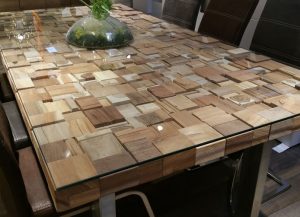Glass & glazing Blog
Toughened Glass
Toughened glass is a wonder material for marvelous interior and exterior design applications and visions. It’s sleek sophistication in appearance, durability, and versatility has made it a number one choice of designers worldwide. It is also very easy to care for.
In this contemporary day and age, toughened glass can be used for practically any area of the home. MyColourGlass specializes in using “low iron” toughened glass. What constitutes “low iron”, and why is it preferable?
Low Iron Toughened Glass
“Low Iron” toughened glass is used in the products at MyColourGlass because of its capacity in presenting a clear display of light transmittance. Actually, there are two types of toughened glass transparencies. Let’s look at them.
• (1) Clear Toughened Glass- Don’t let the name “clear” deceive you. “Clear” toughened glass is not the clearest type of toughened glass you can get, despite its title. Glass, in general, does not have a high iron content. Ordinary clear toughened glass has a tendency to cast a green tint, such as you see in the old fashioned Coca Cola bottles. If you are having your glass back painted, as we often do at MyColourGlass, this can present a problem in colour matching.
• (2) Low Iron Toughened Glass- Low iron toughened glass is much more transparent than the standard clear toughened glass. It is not only preferable for colour matching, as mentioned earlier, but also for clear viewing through display casing without a greenish tint.
How Is Toughened Glass Manufactured?
Toughened glass was originally manufactured using extreme heating above 720 decrees Centigrade, which is equal to 1328 degrees in Fahrenheit. It is then rapidly cooled down using air, which hardens the surface.
While the surface is contracting because of being rapidly cooled down, the inner core of the glass is still hot. As it slowly cools down also, different layers of glass are created. Extreme tensile stress evened out with compression in the surface stress is what ultimately makes the glass “toughened and strong”, as the name suggests.
The more contemporary method of making toughened glass has advanced to a chemical process where the glass is dipped into an extremely hot potassium nitrate chemical mixture. The chemical mixture of nitrate forces the surface layer of the glass into compression. This is done by reversing sodium ions in the outer layer of glass with the much larger potassium ions. The chemical method of producing toughened glass results in a much stronger glass than the original method of manufacturing. This specially toughened glass has become a popular material for construction with a multitude of applications.
Toughened Glass in the Contemporary Setting
Toughened glass in the home today can present in a variety of beautiful uses definitely adding to mega styling. Not only is it used as wall cladding and splashbacks, but also in architectural features. These can include but are not limited to wall dividers, balconies, and balustrades. Take a look around MyColourGlass to see some beautiful uses for low iron toughened glass.























